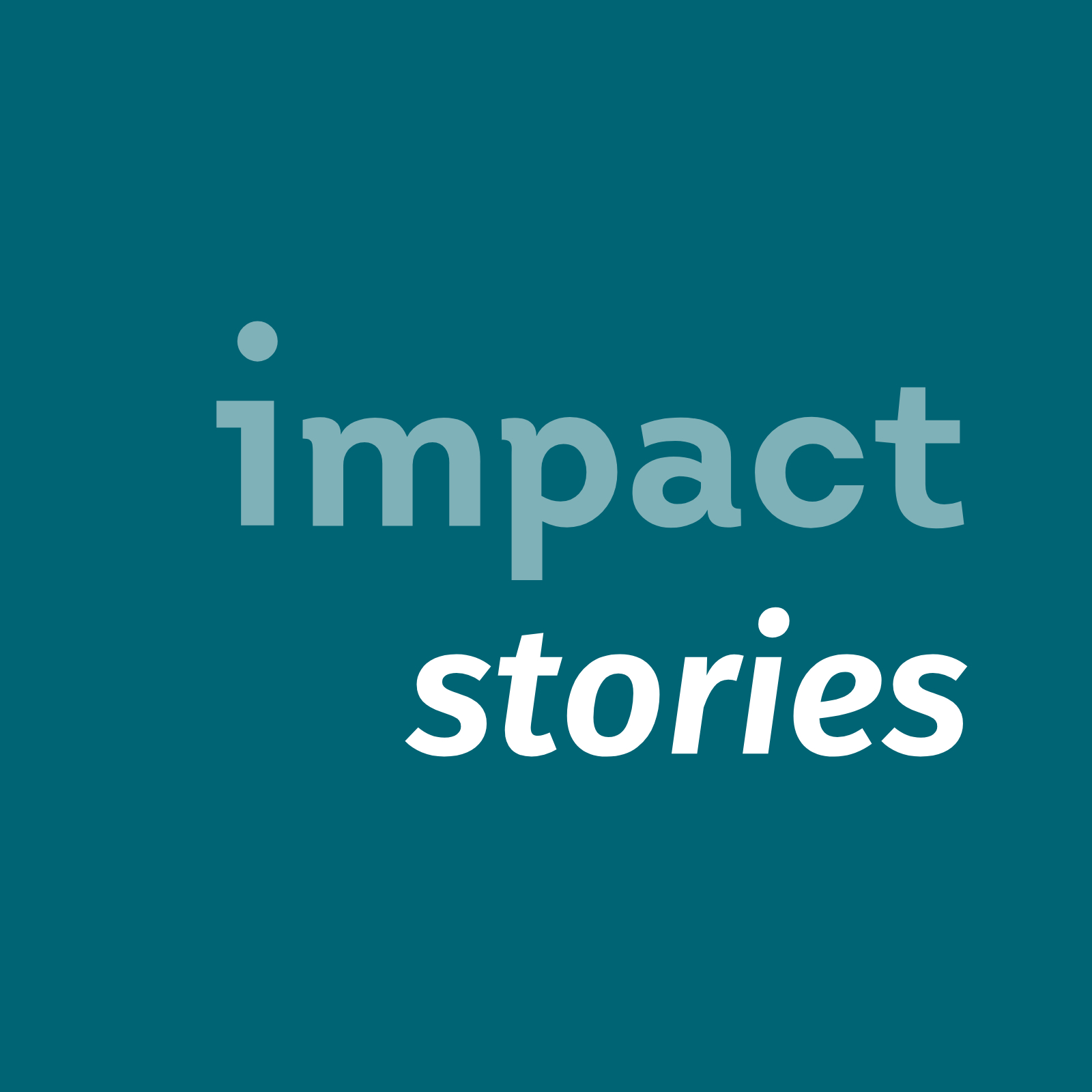

Kennemer Foods International
Kennemer Foods International is a sustainable commodity company based in the Philippines. Apart from producing cocoa and other crops, it supports smallholder farmers and contributes to forest conservation in a three-layered landscape model. Learn how Founder Simon Bakker leverages carbon credits to finance extension services!
To start, can you briefly introduce yourselves?
Simon: My name is Simon Bakker. When I founded Kennemer Foods in 2010, I just wanted to produce cocoa. Now, we protect the environment and support smallholder farmers in Mindanao in the Philippines.
Fe (pictured below): I am Fe Gumanoy Ogyo, a daughter and a wife of cocoa farmers. On our four hectares of land, we’ve been growing cocoa and durian fruits for generations. This is our main source of income. I lead a grower group that works with Kennemer.

How does Kennemer Foods support smallholder farmers and the environment?
Simon: We have developed a landscape approach. In the lowlands, we help farmers increase their yields and become more professional. This creates jobs in these areas, so that young people don’t need to cut down trees to start unprofitable farms in the midlands. In the midlands, we invest in afforestation (planting trees) and run a grower programme. The programme introduces farmers to a multi-crop agroforestry system as an alternative to slash and burn agriculture. In the uplands, we work with indigenous people to conserve the forests. Deforestation happens because of a lack of sustainable livelihoods, so we have expanded our grower programme and adapted it to local practices. In addition, we reach agreements on which areas are to be protected and monitored.
What’s the point of multi-cropping?
Simon: To plant cocoa trees, many farmers take loans from our finance company, Agronomika. The trees grow very slowly, and you don’t see much harvest in the first three years. This means that the loan doesn’t perform, which is unhealthy for the farmers’ cash flow. We introduced multi-cropping to solve this problem. In addition, agroforestry is good for the soil, and shade trees like banana benefit the crops.
Why do you run a finance company as well?
Simon: When we started the company, we soon realised that we needed more trees to scale. Government banks did not offer the sort of long-term loans that farmers needed to plant cocoa trees. After working with the banks for a few years, we decided to set up our own finance company in 2016, Agronomika. This way we no longer need to chase after the few government-accredited bankable cooperatives. Instead we can work with smaller farmer groups.
Can you explain more about these farmers’ groups?
Fe: Our cooperative helps member farmers make a sustainable income. In partnership with Kennemer, it gives them access to public grants and provides them with quality seedlings for succeeding growth cycles. Member farmers also receive incentives at the end of the buying season to encourage them to plant more cocoa.

How do farmers benefit from your business model?
Simon: We take impediments away for them. To make marketing and input buying more efficient, we cluster farmers into groups if the cooperatives are not effective. In areas where high-quality inputs are unavailable, we provide them. With Agronomika, we offer customised farmer loans. In addition, we provide a guaranteed market not only for cocoa, but also for other fruits and grains. This means that farmers have a continuous and long-term income from diverse sources. Depending on what they grew before starting to intercrop cocoa, farmers can increase their income by one hundred to two hundred percent.
Fe: Before working with Kennemer, we were having difficulties dealing with an unstable market for cocoa. We also needed to dry the beans by ourselves, because there was no market for wet beans at the time. The high peak season is also the rainy season, so they sometimes started to rot. This resulted in very low market prices. Now that we’ve partnered up with Kennemer, our lives have become more comfortable. We don’t need to worry about drying the beans because they have quality facilities for that. When we reached out to them, they also instantly helped us acquire a sustainable market share.
How does your business model include women?
Fe: Most members who join our weekly meetings and activities are women. Cocoa farming is suitable for them because they are able to execute sustainable farming practices. At the end of the harvest season, however, heavy physical work is required. That’s why we gather all the troops to finish the rest of the harvest.
Simon: Several grower communities have self-organised after we came there, and many of them are women-led. Cocoa is a gender-neutral crop because it is harvested slowly. If the trees are close to their home, women can go there once a week and pick the pods. In fact, many of the farmers are female because the men contract their labour elsewhere. We also see that often the work is shared. Loan contracts, for example, are signed by both spouses.
How many farmers do you reach?
Simon: As of now, we work with 19,000 farmers in Mindanao.
How has the environment benefited?
Fe: Compared to other crops, cocoa leads to less soil erosion, and less nutrients are siphoned off.
Simon: We have also planted 20 million trees so far.
How do you measure the impact you create?
Simon: We look at the farmers’ additional income, the number of farmers trained, and a number of environmental indicators: greenhouse gas emissions, trees planted, and hectares made more sustainable. To measure these numbers, we have created our own technology platform. We use satellite data to analyse the land and employ drones to evaluate farms. In addition, we trace crops and calculate impact indicators digitally.

How do you generate income?
Simon: We have three sources of income: Agronomika, crops, and carbon credits. Most of our crops are produced for the international market. We partner with large multinational buyers who also value the impact we create. In addition, we have recently started to sell carbon credits to finance our extension work. We plant cocoa trees and shade trees, store soil carbon, and run reforestation projects. This year, we started to sell carbon credits to a chocolate maker that wants to offset its emissions. In 2021, we expect to earn a total revenue of about twenty million USD.
What makes this model viable?
Simon: There is strong demand for cacao from the ASEAN region: The market is about one billion USD. It is even larger for quality Philippine bananas, our second most important crop. The carbon market, too, is expected to grow significantly.
Do you receive any support from outside the company?
Simon: We have partnered with different NGOs and development organisations. GIZ and the Dutch government, for example, have co-founded some of our programmes and provided trainings. Those were mainly about systemic improvements like our IT infrastructure.

What are your plans for the next few years?
Simon: By 2025, we will be a carbon neutral agri-sourcing platform. To do so, we will invest in reforestation and expand our REDD+ forest conservation programs to 250,000 hectares. This will yield VCS certified emissions reductions of more than four million tons of carbon over ten years. Selling the carbon credits will enable us to provide scholarships and other new services to community members. In addition, we want to grow. Currently, we are responsible for seventy per cent of cocoa exports from the Philippines because the sector is still nascent here. To grow the industry, we need to plant more trees. This is why Agronomika is set to grow its loan portfolio from 2.5 million USD now to 35 million USD by 2030. In addition, we are investing in drone surveying and satellite-connected farm sensors. Data access on nutrients, diseases and water management will help us increase yields by thirty to forty percent. We also want to expand our company-managed farms.
Fe: My goal for the next ten years is to venture into value adding on our cocoa beans.
And what is your long-term ambition for the company?
Simon: We want to become a major player in the Asian region: not just for cocoa, but for multiple crops. When companies source products, they increasingly need to know whether they have been produced in a sustainable way. So there is potential to scale our business.
What demonstrates your potential for profitable growth?
Simon: We are profitable, and we have scaled. Kennemer Foods has been in the business for ten years, which is more than many players in the sector.
What do you need for scaling?
Simon: We will need to track additional funding and continue to invest. There is a lot of climate and impact financing available, so this should not be too difficult. The environment has improved a lot over the past ten years.

What challenges have you overcome?
Simon: Doing business with smallholders is a non-stop struggle. In the beginning, there was a hurdle on every step along the way – finance, planting materials, climate change, training farmers to follow our protocols. You need to either provide solutions yourself or find partners who do it for you. People in our space need to be problem-solvers. There is a danger of getting stuck in small transactional hurdles that slow you down. So we identified the most common problems among farmers and solved the key ones.
Fe: The major challenge I am facing is climate change: It prolongs the season, reduces the number of cocoa flowers, and leads to high incidents of disease and infection. We could sometimes prevent this, but it may cost us a fortune. Our contribution may be small, but we help with climate change through sustainable farming, which we learned from Kennemer.
What inspires you to keep going?
Simon: You have successes along the way that motivate you. It’s hard to get out of poverty, but it is possible with a bit of patience. It’s also good to see that people now value getting products from the right value chain.
What advice can you give to other inclusive business entrepreneurs?
Simon: Don’t be afraid to be ambitious. You need to become bold in trying to make an impact because the problems you are going to encounter will be so complex and systemic. You will need to collaborate with governments, NGOs, and financiers, so don’t be afraid to reach out.

The Impact Stories are produced by the Inclusive Business Action Network (iBAN). They are created in close collaboration with the highlighted entrepreneurs and teams. The production of this Impact Story has been led by Susann Tischendorf (concept), Sara Karnas (video), Katharina Münster (text), Christopher Malapitan (illustrations), Alexandra Harris (editing) and Olachi Opara (info graphics). The music is royalty free. All photographs are courtesy of Kennemer Foods International.
Updated: 12/2021.